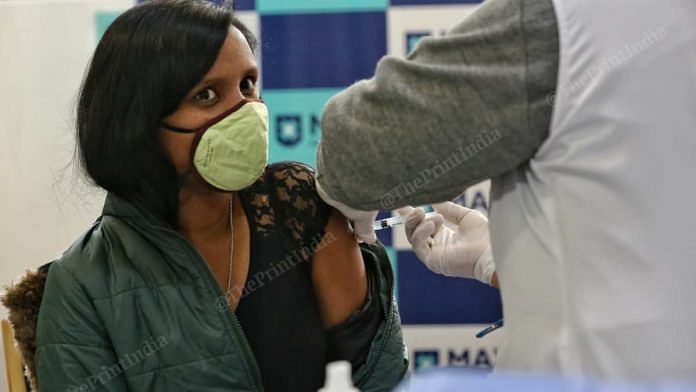Getting an effective vaccine is important, but a vaccine must also be safe. What everyone agrees is that even in the middle of a pandemic, the adverse effects of a vaccine should not be comparable or worse to the actual disease. So far, with the leading vaccines the news has been good, but vaccines track safety data for years.
Here a few words about safety and efficacy are necessary. There is no such thing as absolute safety because safety is a relative term. Safety takes into account the relative benefits of the vaccine compared to the risks of the disease. Similarly, efficacy is measured in trials, and may vary from actual effectiveness in a larger population. This is because even the best designed trials cannot fully mimic real-world conditions and variability. These points are necessary to indicate that the review of vaccines (and drugs) does not end with provisional approval: as millions of people are vaccinated there will continue to be an ongoing assessment of adverse effects and broad effectiveness.
Vaccines have saved countless lives and are responsible for a higher standard of living. However, among people there may be legitimate concerns with respect to the safety of vaccines. A drug is taken by people who are sick and need it. A vaccine, on the other hand, is given to those who are healthy. Therefore, it is vital to always get it right.
Some researchers believe that ineffective vaccines can generate antibodies that are weak, or worse which can actually help SARS- CoV-2 infect cells, by a process known called antibody-dependent enhancement.24 Fortunately, through the end of 2020 this kind of detrimental effect had not been shown to occur with any vaccine.25
A vaccine given to millions of people must be safe and effective. In 1955, the polio vaccine which contained virus particles that had been inactivated was developed by Jonas Salk. The vaccine took years to develop and was immediately highly sought after. The commercial release of the vaccine was, however, very hasty: the formulation was given to five companies with little oversight. One of these companies, Cutter Laboratories, created and distributed a vaccine that was contaminated with live polio virus which caused 70,000 children to get sick, 164 to be permanently paralysed and ten to die. This is a dark blot on vaccines, but it should also be mentioned that after the tragedy, billions have received polio vaccines and the disease is on the path to eradication.
As noted, vaccines undergo an extensive process by which their safety is examined. Nonetheless, it is almost certain that many people will refuse to get vaccinated. If a large segment of the population doesn’t take a vaccine, it is a serious setback to ending the pandemic quickly with less suffering.
Also read: From vaccine hesitancy to vaccine eagerness. In phase II, Modi govt has new challenges
From vaccines to vaccinations
Creating effective and safe vaccines and drugs is only half the battle. There must be equitable access across countries and different socioeconomic groups. There are legitimate concerns that wealthier nations will prioritize their own interests over broader global access. The track record from the last pandemic is not great. In 2009, as the H1N1 influenza pandemic darkened the horizon, wealthy countries purchased supplies for vaccines and low- and middle- income countries were left out.26 Currently, nine vaccine-producing countries (with only 12 per cent of the world’s population) use 62 per cent of the world’s influenza vaccines. Inequity in COVID-19 vaccine distribution will be a concern through 2021.
Over the last decade, research and development and manufacturing capabilities have become globally distributed. The best treatments and vaccines against COVID-19 may be developed and manufactured outside traditional centres of pharmaceutical innovation. Cooperation remains a matter of necessity for and within all nations to ensure equitable distribution of therapies.
We should think of vaccines as resources belonging to all of humanity. Companies invest significant resources, both monetary and in terms of intellectual property and expertise, in the creation of vaccines. They need to recoup their expense. But there are broader issues at stake. Should a vaccine maker be allowed to profit from the creation of a vaccine that prevents a life-threatening disease? Who pays for a vaccine created with significant public research funding?
Achieving global, equitable access to COVID-19 vaccines and therapeutics will be difficult. Amid rising populism, governments have resisted multilateral institutions and international agreements. Many countries have responded to this pandemic by turning inward: closing borders, hoarding medical resources and scapegoating foreigners. The first vaccines that have made it through the approval process are a very scarce resource. Demand exceeds supply already. Therefore, the distribution of multiple vaccines ensures that one maker can’t monopolize this life-saving resource.
Also read: India beats China at its own game in vaccine diplomacy battle
Anticipating inequities in vaccine distribution, in September 2020 the WHO released its vaccine distribution plan.27 ‘The first priority must be to vaccinate some people in all the countries, rather than all the people in some countries,’ said WHO Director-General Tedros Adhanom Ghebreyesus, adding, ‘Vaccine nationalism will prolong the pandemic, not shorten it.’
Writing in Nature, Yot Teerawattananon and Saudamini Vishwanath Dabak spelled out the challenge using visual terms. ‘Creating a safe and effective vaccine is akin to striking base camp on Everest—the gruelling climb to procurement and delivery lies ahead. ’28
The challenge through all of 2021 will be in getting people vaccinated. Vaccines offer no protection unless they are available and people take them. There is a pithy saying that is well-known in infectious diseases research: vaccines don’t save lives, vaccinations save lives. With all this said, we must applaud the scientists who created live-saving vaccines within a year. There is cause for optimism that effective vaccines will end the pandemic.
 This excerpt from Covid-19: Separating fact from fiction has been published with permission from Penguin Random House India.
This excerpt from Covid-19: Separating fact from fiction has been published with permission from Penguin Random House India.



